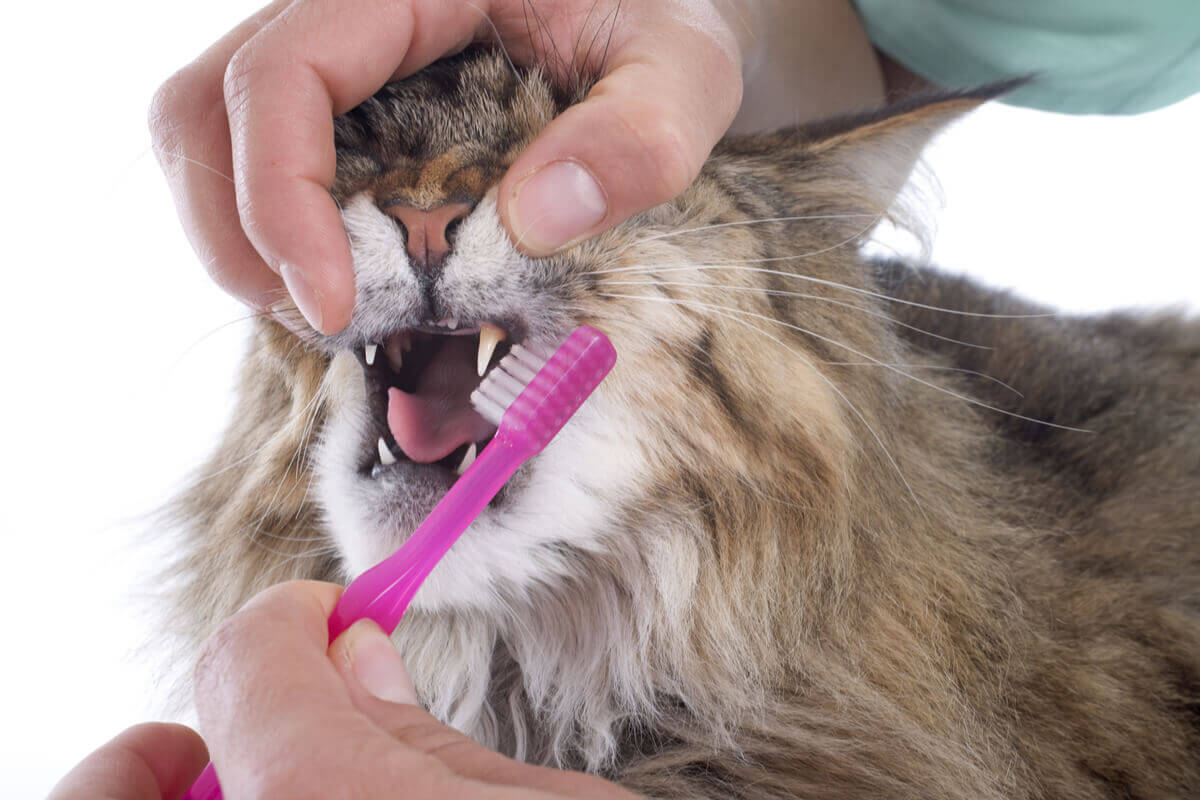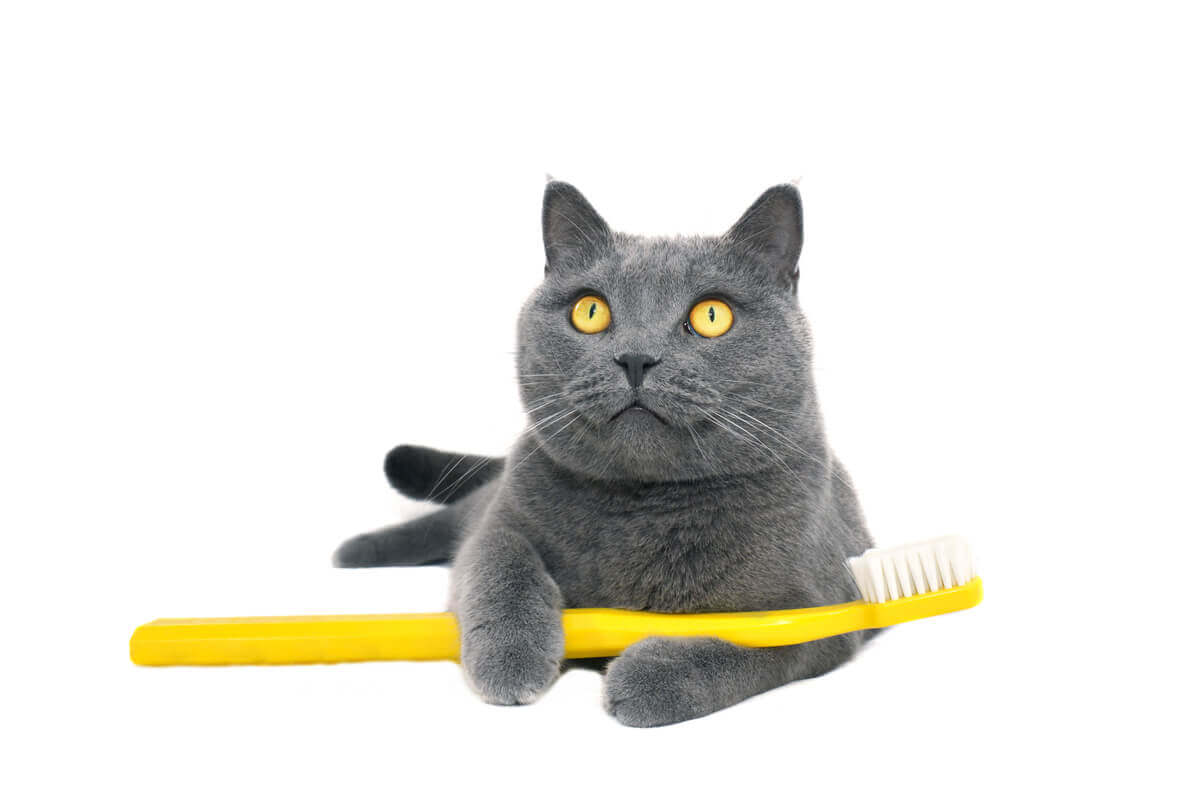Caring for Your Cat's Teeth: How and Why


Written and verified by biochemistry Luz Eduviges Thomas-Romero
A cat’s teeth are adapted to eating meat because, like other felines, cats are predators. However, your pet’s teeth share many similarities with parts of the human mouth. This means caring for your cat’s teeth requires the same attention as yours do.
Do you know the best routine for the oral care of your feline companion? Are you aware of the importance of routine hygiene for pets? Don’t be afraid, because here we’ll give you answers to these questions and many more.
Why does caring for your cat’s teeth matter?
If you care for a cat’s teeth, they can develop dental diseases as easily as a human. Plaque is the first thing deposited on the teeth and is created by bacteria combined with the pet’s saliva. If left unchecked for a long time, it will turn into tartar.
The formation of dental abscesses on the teeth or gums will cause your cat a lot of pain. At this point, the only way to remove them is through surgery. This is one reason why prevention is always the best medicine.
If your cat has severe decay, they may lose some of their teeth. In addition, infection of the teeth and gums can spread into the bloodstream. From there, it becomes a systemic problem that can damage your cat’s kidneys, liver, heart, or lungs.

Where to begin with your pet’s dental care
When adopting a pet, it’s always a good idea to start with a veterinary check-up. A professional will be able to determine if your pet has any dental problems and can suggest the necessary treatment.
Some cats will require a professional cleaning before you take them home. In addition, a veterinarian will suggest specific products that your pet needs. Each cat may have different risk factors and therefore the necessary products may be different. That said, there are certain items that will be absolutely essential in any case.
What you need to take care of your cat’s teeth
There is a wide range of shapes and sizes when choosing a cat toothbrush. Some of them can be put on your finger for easy use, while others have a traditional handle.
Remember: A suitable cat toothbrush should have soft bristles and an angled head. Depending on how severe the cat’s problems are, you may be better off with traditional handles, as they give you a firmer grip.
Be sure that the toothpaste you use is made specifically for cats. Human toothpaste won’t work at all and can be toxic because it contains fluoride and other chemicals. If the cat has a lot of tartar, look for a paste with enzymatic agents that help break it down, as it will be more efficient.
How to brush the cat’s teeth
There are several steps to follow for proper cleaning:
- Get your cat used to having your fingers near and in her mouth. This has to happen gradually as it’s not something that cats are naturally used to. Start by touching the mouth area gently and consistently, but not for too long.
- Get your cat used to the taste of the toothpaste by putting some on your fingers and letting your cat sniff and lick it. If you brush your cat every day at approximately the same time, your pet will get used to it much more quickly.
- Don’t rush things. When you’re ready to start, put your cat on a table or in your lap. Hold the animal gently to reduce its movements and keep it from escaping. This will make it easier to get to your cat’s mouth. Lift your cat’s upper lip and slide the brush in a circular motion along the line between the gum and teeth.
The front teeth should go first, as they’re the easiest to reach. Little by little, your cat will get used to feeling the brush and you’ll be able to reach the back teeth.

Don’t forget to reward your cat whenever you’re caring for your cat’s teeth. Petting, praise, and playtime should follow–whatever your cat enjoys most! Even if you don’t get too far with the brushing, you should reward your cat. Gradually, your pet will find this activity more enjoyable, as long as you’re careful not to hurt it.
All cited sources were thoroughly reviewed by our team to ensure their quality, reliability, currency, and validity. The bibliography of this article was considered reliable and of academic or scientific accuracy.
- Hayashi, K., & Kiba, H. (1989). Microhardness of enamel and dentine of cat premolar teeth. The Japanese Journal of Veterinary Science, 51(5), 1033–1035.
- Orsini, P., & Hennet, P. (1992). Anatomy of the Mouth and Teeth of the Cat. Veterinary Clinics of North America-Small Animal Practice, 22(6), 1265–1277.
This text is provided for informational purposes only and does not replace consultation with a professional. If in doubt, consult your specialist.